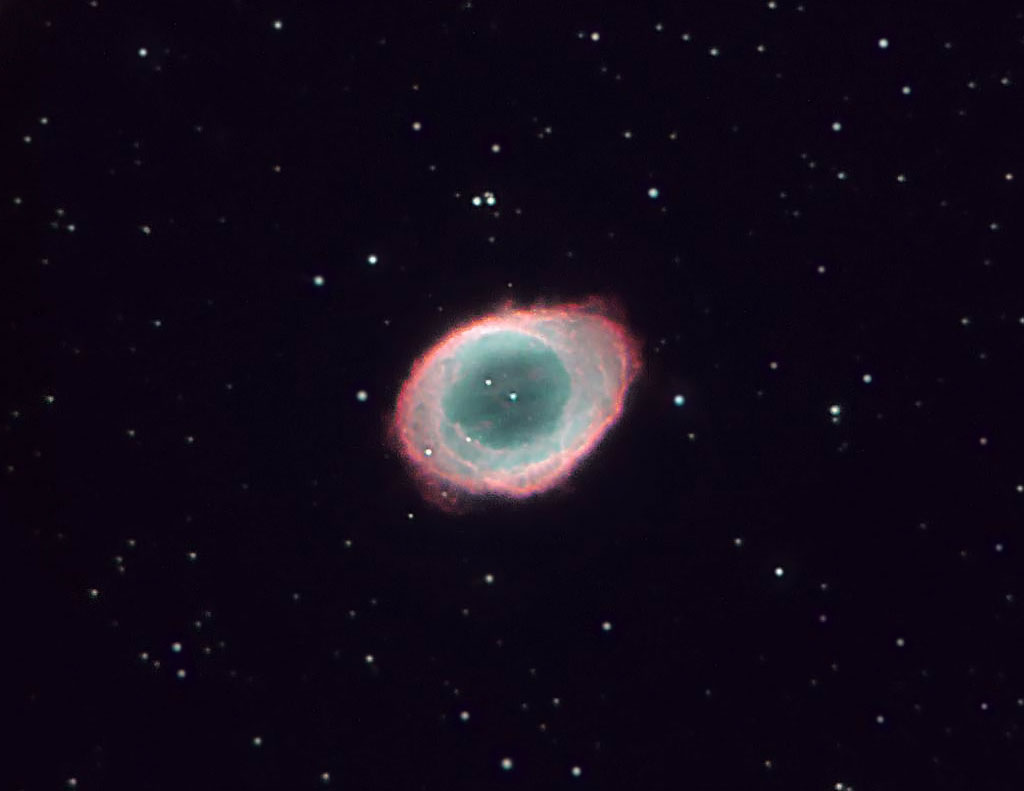Wikipedia Notes: The famously named "
Ring Nebula" is located in the northern
constellation of
Lyra, and also catalogued as
Messier 57,
M57 or
NGC 6720. It is one of the most prominent examples of the deep-sky objects called
planetary nebulae(singular,
planetary nebula), often abbreviated by astronomers as simply
planetaries or
PNe.
M57 is located in
Lyra, south of its brightest star
Vega.
Vega is the northwestern vertex of the three stars of the
Summer Triangle. M57 lies about 40% of the angular distance from
β Lyrae to
γ Lyrae.[5]
M57 is best seen through at least a 20 cm (8-inch)
telescope, but even a 7.5 cm (3-inch) telescope will show the ring.
[5] Larger instruments will show a few darker zones on the eastern and western edges of the ring, and some faint nebulosity inside the disk.
This nebula was discovered by
Antoine Darquier de Pellepoix in January, 1779, who reported that it was "
...as large as Jupiter and resembles a planet which is fading." Later the same month,
Charles Messierindependently found the same nebula while searching for
comets. It was then entered into his catalogue as the 57th object. Messier and
William Herschel also speculated that the nebula was formed by multiple faint stars that were unable to resolve with his telescope.
[6][7]
In 1800, Count
Friedrich von Hahn discovered the faint central star in the heart of the nebula. In 1864,
William Huggins examined the spectra of multiple nebulae, discovering that some of these objects, including M57, displayed the spectra of bright
emission lines characteristic of fluorescing glowing gases. Huggins concluded that most planetary nebulae were not composed of unresolved stars, as had been previously suspected, but were nebulosities.
[8][9]
